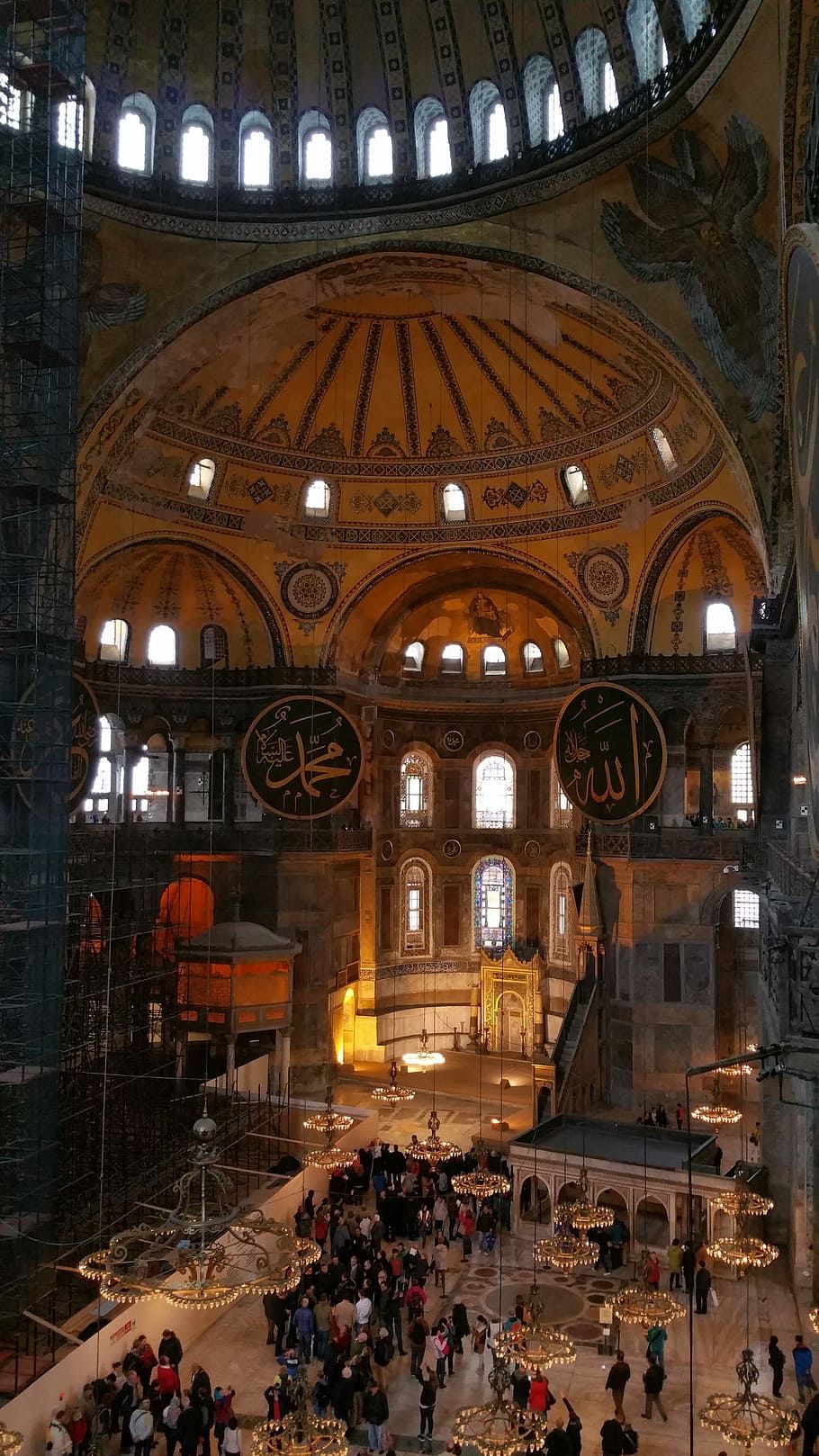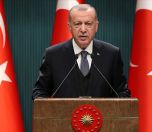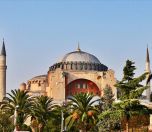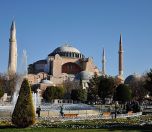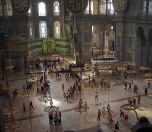The Quran session in Hagia Sofia on May 29. (Photo: AA)
Click to read the article in Turkish
The government is working on the status of Hagia Sophia and will announce its decision "when the time comes," the ruling Justice and Development Party (AKP) Spokesperson Ömer Çelik has said.
Built as a church in 537, Hagia Sophia (Ayasofya in Turkish) was converted to a mosque after the Ottoman Empire took the city in 1453. It was converted to a museum by the Republic in 1934.
While the status of Hagia Sophia has been occasionally debated since then, a Quran session at the museum on the anniversary of İstanbul's capture by the Ottoman Empire and statements by President Recep Tayyip Erdoğan have reawakened the debate.
The Quran event, where a minister recited the "Conquest" section of the Muslims' holy book, caused a row between Greece and Turkey as Athens claimed that it violated the UNESCO World Heritage Convention.
_(3945434964).jpg) (Photo:Wikimedia Commons)
(Photo:Wikimedia Commons)
Erdoğan last night (June 8) told the state-run broadcaster TRT that "Greece is not the one ruling this land, so it should avoid making such remarks. If Greece does not know its place, Turkey knows how to answer."
Pro-government daily Hürriyet reported on June 5 that Erdoğan ordered his party to work for the conversion of the museum to a mosque. He reportedly told his party members that Quran can be recited and prayers can be performed in Hagia Sofia. He said that it might be open to both prayers and tourists, just as the Blue Mosque in the same district.
"There has been a lot of debate on this issue in Turkish politics since 1934. This heritage belonging to humanity, this monumental building, was transformed into a mosque after it served as a church and has a tremendous place in the eyes of the nation," Ömer Çelik told reporters yesterday.
"We will work and announce the decision we make when the time comes," he said, adding that the President will make an announcement when the studies are completed.
Faik Öztrak, the spokesperson of the main opposition Republican People's Party (CHP) criticized the AKP for "exploiting" the issue and using it as a political instrument.
"You have been in power for 18 years, it depends on the decision of one man. Don't exploit this, don't do politics over this, if you open it, open it," he said.
At a rally last year, Erdoğan had criticized his supporters demanding the museum to be converted to a mosque, saying that they wouldn't even fill the Blue Mosque during prayers. He knew when to act, he had said.
About Hagia SophiaHagia Sophia with its innovative architecture, rich history, religious significance and extraordinary characteristics has been fighting against time for centuries, is the largest Eastern Roman Church in Istanbul. Constructed three times in the same location, it is the world's oldest and fastest-completed cathedral. With its breathtaking domes that look like hanging in the air, monolithic marble columns and unparalleled mosaics, it is one of the wonders of the world's architecture history.
Today's Hagia Sophia is the third building constructed in the same place with a different architectural understanding than its predecessors. By the order of Emperor Justinianos, it was built by Anthemios from Tralles (Aydin) and Isidoros from Miletos (Balat). The construction started in 532 and was completed in five years and opened for worship in 537 with a great ceremony. When Sultan Mehmet the Conqueror conquered the city, he converted it into his imperial mosque. It continued its existence with the addition of Ottoman architectural elements and turned into a museum in 1935. Known for its Imperial Gate, Beautiful Gate (Splendid Door) and Marble Gate, Hagia Sophia has 104 columns, some of which are brought from ancient cities. The "Omphalion" section where the emperors crowned stands out with marble workmanship like these pillars. Hagia Sophia fascinates people by not only with its architectural design, but also by its gold-plated, silver-plated, glass, terracotta and colored stone mosaics, and the original ceiling mosaics of the 6th century with their floral and geometric motifs. The mosaics with figures following the icon ban in the 8th century especially Mother Mary depicted with child Jesus in her arms, the Archangel Gabriel and the Archangel Michael and Deisis stage mosaics must be seen. Sultan Abdulmecid's Mosaic tughra was built between 1847 and 1849 during the restoration by the Fossati brothers. Eight large round plates that were added during the Ottoman period are the work of famous calligrapher Kadıasker Mustafa İzzet during the reign of Sultan Abdülmecid. Two solid marble cubes in the side aisles, which can receive an average of 1250 liters of liquid, were brought from the ancient city of Bergama during the reign of Sultan Murad III. The Hagia Sophia Museum is famous for its exterior as well as its interior. The mausoleums of Ottoman Sultans outside the building are among the first to visit. There are tombs of princes and mausoleums of Sultan Selim II, Sultan Murad III, Sultan Mehmed III, Sultan Mustafa I, and Sultan Ibrahim whose reigns followed one another. The four minarets of Hagia Sophia, known to be built by Mimar Sinan, the fountain of Sibyan (elementary) school, the fountains, buttresses, the treasury building and the soup kitchen are also increasing the magnificence of the structure. Source: Ministry of Culture and Tourism |
(EKN/VK)





